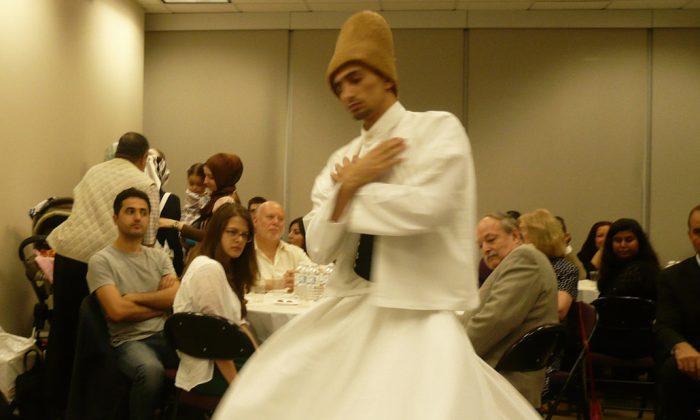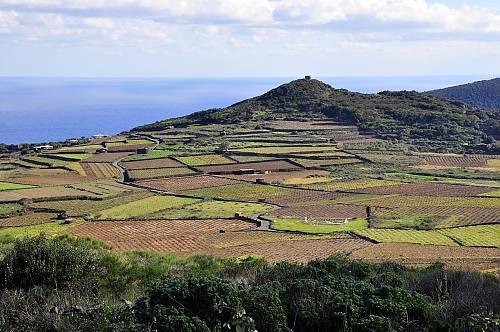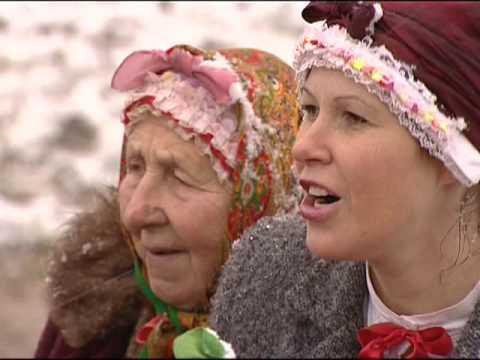My interest in Turkish cooking was revived recently at a dinner at Ottawa City Hall put on by the Ottawa branch of the Intercultural Dialogue Institute (IDI). I was invited to the Aug. 7 event by IDI Ottawa chair Yavuz Zeybek, and was fascinated by the whirling Dervish performance by Kamil Tekelioglu.
On a visit to Turkey some years ago, I discovered that it is a large country whose cuisine varies from place to place. For example, the foods of Istanbul and Izmir and further down along the Aegean Sea still retain many tastes dating back to Ottoman times, when subtle spices, a variety of rice dishes, and seafood played an important role.
In the Black Sea area however, the food is influenced by Balkan and Slavic cuisines. The southeast is famous for kebabs, mezes such as tiny meatballs, calamari, rice-stuffed vine leaves, sliced melon, and exotic sweets like baklava—all introduced to the Byzantine court of Justinian I in sixth-century Constantinople, now Istanbul.
Here are a few recipes for authentic Turkish dishes you can make at home.
The Sultan’s Swoon
This famous dish is said to have been the favourite of a Turkish priest prepared by his wife from his favourite vegetable, the eggplant. It was apparently so delicious it made him faint. The name in the Turkish language means just that—the Sultan has fainted.
3 medium eggplant
125 ml (1/2 cup) olive oil
2 cloves garlic, minced
4 large onions, chopped
4 peeled tomatoes, seeded and chopped
5 ml (1 tsp) sugar
Salt and pepper to taste
125 ml (1/2 cup) fresh bread crumbs, without crusts
15 ml (1 tbsp) tomato paste
15 ml (1 tbsp) parsley, minced
40 ml (3 tbsp) pine nuts, chopped
40 ml (3 tbsp) dried bread crumbs
Preheat oven to 180º C (350º F). Poach the eggplant in a large pot of salted boiling water for 10 to 15 minutes. Cool immediately in cold water. Cut in half lengthwise and scoop out the pulp, being careful not to tear the skin. Oil skins inside and out and arrange in a well-oiled baking pan, skin side down.
Heat olive oil and gently stew garlic and onions until soft. Add tomato and pulp from eggplant with the sugar, salt, and pepper. Simmer for approximately 20 minutes, then add fresh bread crumbs and tomato paste. Cook, while stirring for a few minutes. Mix with parsley and pine nuts. Fill shells, top with dry bread crumbs and bake for 20 minutes, covered. Uncover and continue baking for another 10 minutes. Serve hot or at room temperature. Makes six servings.
Turkish Pilaf
50 ml (1/4 cup) currants
125 ml (1/2 cup) butter, divided
1 onion, chopped
500 ml (2 cups) rice
2 ml (1/2 tsp) cinnamon
2 ml (1/2 tsp) allspice
1 ml (1/4 tsp) mace
Pinch powdered cloves
1.25 litres (5 cups) beef broth
Salt and pepper to taste
50 ml (1/4 cup) pine nuts
50 ml (1/4 cup) almonds, sliced
Wash currants. Melt half the butter in a large saucepan. Brown onion, add rice, and stir for 3 or 4 minutes. Add spices and the broth. Stir well once, lower heat, cover and simmer for l5 minutes. Test to see if rice is done (should be fairly firm). Drain excess broth. Season with salt and pepper. In another pan, sauté the pine nuts, almonds, and currants in the remaining butter. Mix with the rice and serve in a heated dish. This goes very well with chicken or lamb. Makes six servings.
Baklava
425 ml (1 3/4 cups) sugar, divided
Juice of half a lemon
150 ml (2/3 cup) unsalted butter, melted and cooled
750 ml (3 cups) blanched almonds, slivered
25 ml (2 tbsp) rose water, divided
1 pkg frozen filo pastry, thawed
Preheat oven to 220º C (425º F) and butter a 30 x 20 cm (12 x 8-inch pan). Bring 1 1/2 cups sugar and 1/2 cup water to a boil and simmer until sugar spins a thread. Add lemon juice. Simmer for 5 minutes, skimming carefully. Add 15 ml (1 tbsp) rose water and cool. Set aside. Add half the melted butter to the almonds and make a paste with the remaining sugar and rose water.
Brush each leaf of the pastry with melted butter, using 10 leaves for each layer. Place first layer in pan and spread with the nut paste. Repeat layers and cut into squares using a sharp knife. Pour the remaining butter over the baklava and bake for 10 minutes, then lower heat to 190º C (375º F) and continue baking until golden, about 35 minutes. Remove from oven, and pour the sugar syrup over the top. Serve when cooled.
Susan Hallett is an award-winning writer and editor who has written for The Beaver, The Globe & Mail, Wine Tidings, and Doctor’s Review, among others. She is currently the European editor of Taste & Travel International. Email: [email protected]





